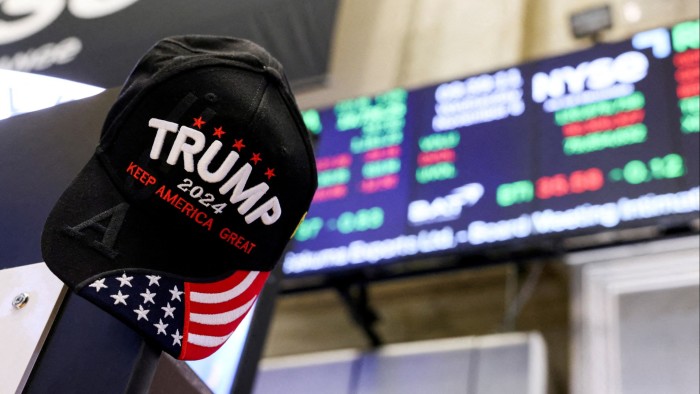Unlock the White House Watch newsletter for free
Your guide to what the 2024 US election means for Washington and the world
Donald Trump’s stop-start trade war has sparked big swings across financial markets this year and triggered a sell-off on Wall Street. So investors are waiting nervously for the US president’s “liberation day” on Wednesday, when he has promised to unveil an array of “reciprocal” tariffs on the country’s trading partners.
Equity and bond markets have whipsawed following early announcements on tariffs. Copper has surged in recent weeks as traders have anticipated charges on any imported metal. The gap between the New York Comex and London Metal Exchange prices has opened up to a near record as US inventories have grown.
This past week the US announced the imposition of 25 per cent tariffs on imports of foreign-made cars. Although he has occasionally made conciliatory statements, most recently Trump has promised that these levies will not change. “This is permanent, 100 per cent,” he said after the announcement.
Comments like this have hardened asset allocators’ assessment about whether Trump will follow through this week.
Some investors warn of more persistent inflation and a hit to growth in the US and beyond if he does. “Stagflation has become our base case scenario,” said Salman Ahmed, global head of macro and strategic asset allocation at Fidelity International.
“De-globalisation is a megatrend pushing in a stagflationary direction,” said Gerry Fowler, a European equity strategist at UBS. “These are likely to lower real growth and raise inflationary pressures, in our view.”
Few expect lasting clarity over White House trade policy from Wednesday’s announcements.
“While we are expecting some incremental details, we do not expect all implementation decisions to be made suggesting there will be residual uncertainty post-announcement,” said Citi strategists. Alan Livsey
How healthy is the US jobs market?
The latest reading on the health of the US labour market will follow hot on the heels of Trump’s tariff announcements in the form of Friday’s non-farm payrolls data.
Economists polled by Reuters expect the figures to show that 128,000 jobs were created in March, the lowest since October’s strike and hurricane-affected total of just 12,000.
The unemployment rate is expected to rise from 4.1 per cent to 4.2 per cent, which would be its highest level since November.
Total non-farm employment rose by 151,000 in February, despite the loss of 10,000 federal government jobs. That reduction in US government employees is likely to continue as Elon Musk’s so-called Department of Government Efficiency tries to slash the size of the federal workforce.
The strength of the labour market remains a crucial consideration for investors already worried about the economic fallout from Trump’s trade war, and any signs of weakness could nudge the Federal Reserve towards a faster pace of interest rate cuts.
Markets are pricing in two quarter-point reductions this year, with a more than 50 per cent chance of a third.
“The recent spike in trade related uncertainty is a headwind to growth, but unlikely enough to materially push rates lower unless the data weakens,” wrote Bank of America strategist Mark Cabana in a note this week. Will Schmitt
Will Eurozone inflation fall?
Eurozone inflation data published this week comes at a crucial moment for the bloc as dramatic shifts in global trade and fiscal policy complicate the picture for the European Central Bank’s easing cycle.
Tuesday’s flash data was expected to show year-on-year inflation flat at 2.3 per cent in March, according to economists surveyed by Reuters — still above the ECB’s 2 per cent target.
The central bank cut its deposit rate to 2.5 per cent earlier this month, the sixth reduction since last summer, but signalled a possible slowdown in the pace of reductions.
Traders are putting a more than 80 per cent probability on another quarter-point cut in April, according to levels implied by swaps markets. Overall, two or three such reductions are expected by the end of the year.
The inflation release risks “surprising to the downside”, wrote analysts at Nomura, after weaker-than expected readings for France and Spain last week.
The euro has rallied this year, in part due to optimism that Germany and other big countries will provide a boost to growth by borrowing and spending more. But Trump’s announcement last week of US tariffs on car imports has fuelled fears of a bigger trade war that curtails EU growth.
“We expect the euro area economy to recover only gradually in the near term due to soft consumption and structural weaknesses,” the Nomura analysts said, even if Germany’s massive spending announcement “appears to have lifted corporate sentiment” across the bloc. Ian Smith
https://www.ft.com/content/01ac8e02-8310-469a-b07c-57e6226cd90d


